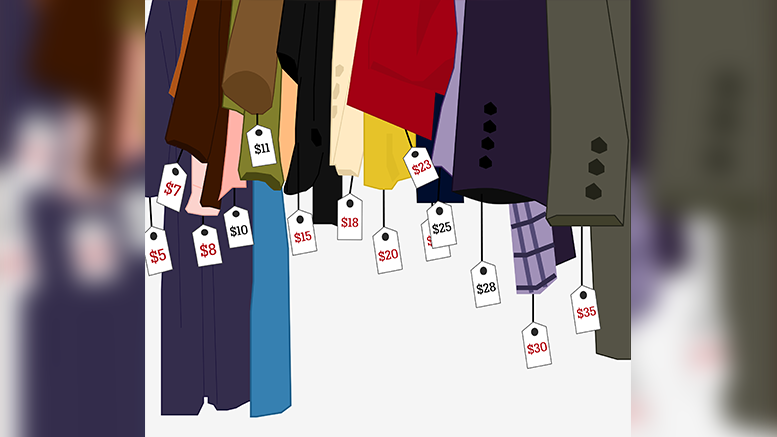Thrifting has always been a cheap, sustainable option for me. I can get nice-looking clothing for half price as compared to full price online or at the mall.
Looking through the racks of clothing with my friends has become a therapeutic activity we do almost every weekend. We grab our afternoon coffees and head over to the thrift store to score good finds or simply browse the racks.
Thrifting is a sustainable option. Rather than buying from fast fashion sites and contributing to the ever-growing problem of the exploitation of workers, overconsumption of clothing products and environmental degradation, buyers can limit waste by purchasing used clothes.
Shein, an online retailer, exploits its workers for profit, with labourers pulling a 17 hour workday for mere pennies. At this expense, Shein sells their clothes at dirt-cheap costs to make substantial profits. Despite their unethical practices, the affordability of their products is highly appealing. You can get a shirt or swimsuit delivered for half the price of a typical item.
Even for someone like me, who primarily thrifts, Shein’s prices are tempting, especially for university students on tight budgets. Their target demographic is largely aged 25 to 34, making up 30.29 per cent of buyers.
However, is supporting a brand that exploits its workers truly worth it? The Berkeley Economic Review notes that thrift stores were often frequented by low-income individuals looking for a deal on affordable clothing, but due to online promotion of fast fashion alternatives, the interest in thrift stores has
skyrocketed.
Thrifting has now become a source of problems for many. The surge in clothing demand has led to price gouging at thrift stores like Salvation Army and Value Village. Price gouging is simply the practice of increasing the prices of goods or services excessively, typically during times of high demand, shortages or crises.
As demand for clothing rises, thrift stores are increasing prices to cover higher overhead costs. A shirt that once cost $1 may now be priced at $9.99. While these prices may seem reasonable compared to regular retail, they significantly impact individuals who cannot afford to spend extra on basic clothing items.
The large price dexterities between clothes in thrift stores can make a big difference to those searching for clothes on a cheaper budget. The notable markup of these clothes has caused problems for those seeking a cheaper alternative.
The internet has played a crucial role in driving up the prices of items at thrift stores. Reselling has become impactful in how thrift stores price items in accordance with what is trendy.
Reselling is when an individual goes to a thrift store, buys items and sells them again for a higher price on websites such as Depop and Poshmark. These sites are notorious for marking up prices so buyers can compete in a price-is-right scenario, and the highest bidder gets to take home the prize.
Reselling skews the market of used apparel to be valued higher and makes secondhand clothing more costly.
The Berkeley Economic Review establishes that one-of-a-kind pieces that were once at thrift stores targeted to underprivileged communities are now being sold to online consumers looking for a unique piece at a lower price.
My experience with thrifting is something I am passionate about. I enjoy shopping at a cheaper price with unique pieces to fit my wardrobe aesthetic. However, I am forced to acknowledge that despite my attempts to be eco-friendly or to collect cool pieces, I am a part of the price gouging problem.
I repeatedly buy off Depop and although I do not actively sell on these online second-hand retail stores, I contribute to the bigger problem.
Despite my role, I actively and consciously think of how much I buy from thrift stores to curve how much I affect those who cannot afford prices to astronomically skyrocket and the privilege that enables me to shop recreationally at thrift stores. I encourage everyone to think of how they can affect second-hand stores to better serve those needing lower-priced clothing.


